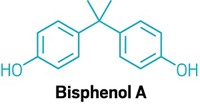Advertisement
Grab your lab coat. Let's get started
Welcome!
Welcome!
Create an account below to get 6 C&EN articles per month, receive newsletters and more - all free.
It seems this is your first time logging in online. Please enter the following information to continue.
As an ACS member you automatically get access to this site. All we need is few more details to create your reading experience.
Not you? Sign in with a different account.
Not you? Sign in with a different account.
ERROR 1
ERROR 1
ERROR 2
ERROR 2
ERROR 2
ERROR 2
ERROR 2
Password and Confirm password must match.
If you have an ACS member number, please enter it here so we can link this account to your membership. (optional)
ERROR 2
ACS values your privacy. By submitting your information, you are gaining access to C&EN and subscribing to our weekly newsletter. We use the information you provide to make your reading experience better, and we will never sell your data to third party members.
Consumer Safety
US FDA urged to limit bisphenol A in food packaging again
Chemical in polycarbonate plastic and epoxy resins faces renewed scrutiny
by Britt E. Erickson
January 31, 2022

A coalition of environmental and public health groups is pushing the US Food and Drug Administration to tighten limits for bisphenol A (BPA) in plastics that contact food. In a Jan. 27 petition, the groups claim that BPA can be harmful at levels far below the amount to which most Americans are exposed. The groups urge the FDA to limit all food-packaging uses of BPA that may result in more than 0.5 ng BPA/kg food.
The petition was prompted by the European Food Safety Authority’s reevaluation of the risks of BPA in food. In December 2021, the EFSA’s Panel on Food Contact Materials, Enzymes and Processing Aids recommended a limit of 0.04 ng BPA/kg body weight per day. EFSA had established a temporary limit of 4 μg BPA/kg body weight per day in 2015. The panel identified an increase in a particular type of immune system cell involved in allergic lung inflammation as the most sensitive health outcome associated with BPA exposure. It also found reproductive and developmental effects associated with low levels of BPA. EFSA is accepting public comments on the draft opinion until Feb. 22.
EFSA’s process for reevaluating the safety of BPA is “transparent, thorough, and grounded in the science” and “a template for how FDA should be doing it for the hundreds of chemicals it approved decades ago,” Tom Neltner, the chemicals policy director at the Environmental Defense Fund, says in a statement. The EDF is one of the groups petitioning the FDA to restrict BPA in food packaging.
BPA has been used since the 1960s to make polycarbonate plastic food containers and epoxy resins that line metal cans. Small amounts of the chemical can migrate from packaging into food and beverages.
The American Chemistry Council, which represents chemical manufacturers, maintains that BPA in food packaging is safe. It claims that BPA is one of the most widely studied chemicals used today.
The FDA began scrutinizing BPA in baby bottles, sippy cups, and infant formula packaging in 2008. The agency rescinded its approval of such uses in 2012 and 2013.
Since then, several studies have indicated that “the harmful effects from BPA can occur at minuscule levels, far below what we’re exposed to,” Linda Birnbaum, former director of the National Institute of Environmental Health Sciences and the National Toxicology Program, says in the statement provided by the Environmental Defense Fund. “The scientific evidence is now more than enough to require strict limits on the use of BPA in packaging and plastics that come in contact with our food,” she says.
UPDATE
This story was revised on Feb. 3, 2022, to add information from the American Chemistry Council.




Join the conversation
Contact the reporter
Submit a Letter to the Editor for publication
Engage with us on Twitter